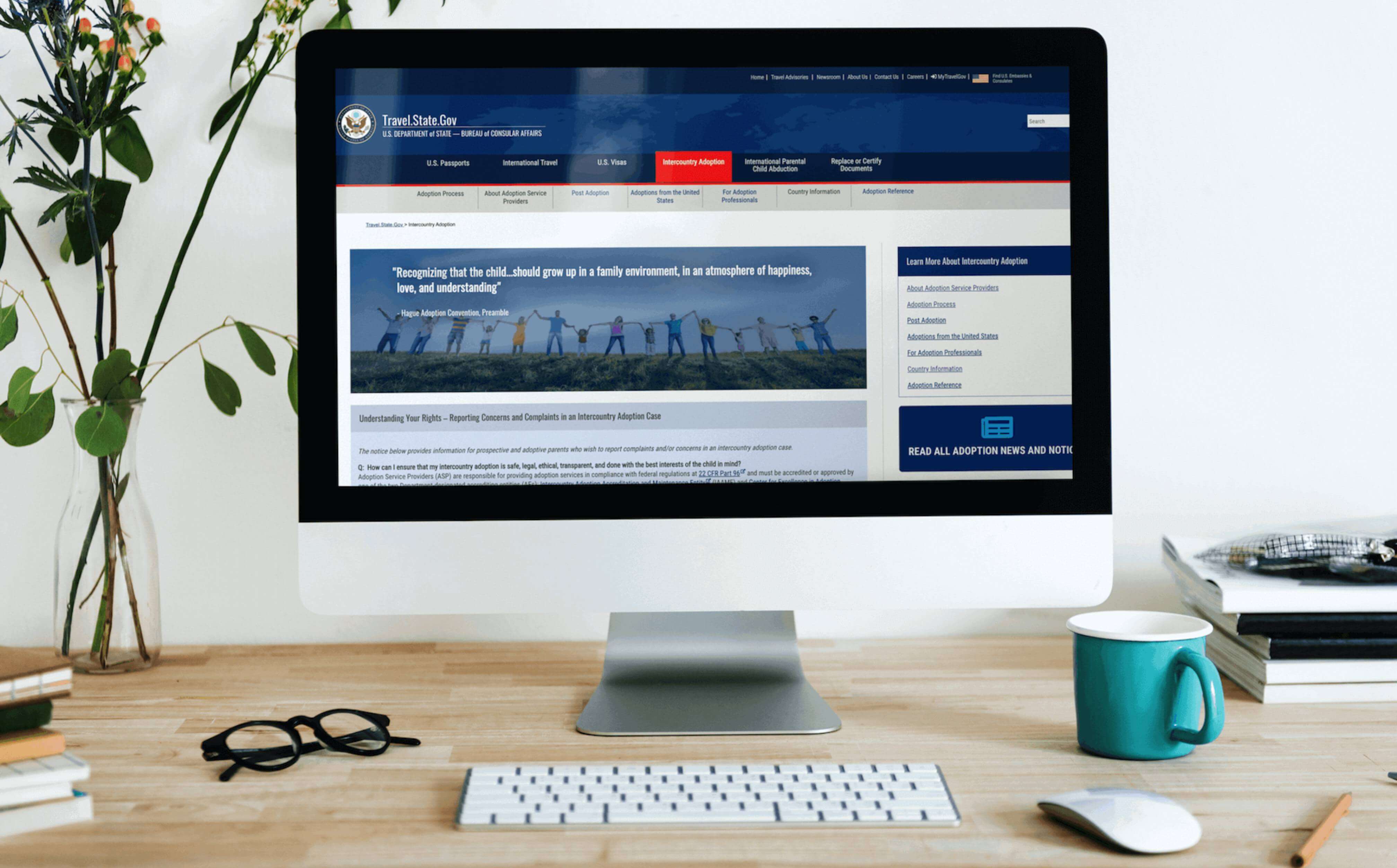UX/UI Design & Content Management for U.S. Government Website
Date: 2023-2024
Tools Used: Adobe Creative Suite, Microsoft Suite, federal website analytics tools
About the Project
I led the Guidehouse workstream for the UX/UI design and content optimization of the U.S. Department of State’s intercountry adoptions website. This comprehensive redesign focused on improving user experience, streamlining content, and ensuring accessibility compliance across the site’s 77 information-dense webpages.
The Challenge
The website was overloaded with information-dense pages and had a cluttered navigation, making it difficult for users to find key information. Additionally, the site was not fully accessible, which meant improvements were needed to ensure compliance with Web 2.0 accessibility and readability guidelines. The goal was to reorganize the site’s content, improve the navigation structure, and create a more intuitive experience for users searching for adoption-related information.Scope and Process
Content Optimization and Accessibility
I rewrote and restructured 77 content-heavy pages to improve readability and ensure compliance with accessibility standards. This involved simplifying complex language and formatting the content to more user-friendly layouts. Content on the intercountry adoptions website had to be consistent with the other Department of State websites, specifically the reading level. All 77 pages had to be rewritten from a post-graduate reading level to an 8th grade reading level, to comply with the accessibility standard. I ensured the information remained accurate while making it more accessible to a broader audience.
UX/UI Design and Site Navigation
I conducted user research by first analyzing the past year’s website analytics, prioritizing the most frequently visited webpages. From then I created "current user" analyses based on website visitor paths, analyzing the platforms people were coming from, the kinds of devices they were using, and what information they were looking for. Then I created user personas, and simulated each current users' journey to learn what pages they would have to visit in order to access their desired information. From then, I conducted team card sorting exercises to improve site structure and navigation. I worked closely with the client to propose and implement a more accessible website navigation and page structure. Additionally, with each aforementioned page rewrite, I carefully organized the content so that the most important information appeared first and the pages’ information had a logical progression.
Workstream and Client Leadership
I led biweekly meetings with the client, designed meeting agendas, and delivered presentations to keep various stakeholders informed. I also facilitated collaborative discussions with the internal consulting team to ensure alignment and adherence to project deadlines.
Team Training
Lastly, I developed a comprehensive transition guide and conducted training sessions for backfill staff to ensure a smooth handover and continued success of the project.
Final Deliverables
- Content revisions for 77 webpages, increasing the website readability towards being more structured, understandable, and user-friendly.
- A redesigned UX/UI layout for the website, including optimized main navigation, submenu navigation, and individual page structures. Additionally, prototypes and user testing reports to guide the implementation phase.
- Accessibility compliance for the website, ensuring WCAG 2.0 readability standards were met.
- A transition guide for staff and training materials to ensure future team members could manage the project effectively.
What I Learned
This project taught me the importance of user-centered design and the role it plays in creating intuitive websites and informing content revisions. It also emphasized the importance of balancing considerations from, and collaborating with, various stakeholders, who may have different requirements from the end user. Lastly, I learned to effectively work with cross-functional teams to ensure the redesign process was smooth and successful.
Results
- The client noted that the newly developed navigation and website structure were more intuitive, providing a solid foundation for client-side teams to build upon and integrate.
- The client expressed appreciation for the thorough work and research involved in restructuring each webpage and navigation, highlighting the emphasis on user-centered design, which had not been a priority in previous iterations of the website.
- Despite external challenges and competing priorities on the client-side, the client was impressed with my preparation, organizational, and effective project management.
- A smooth transition was ensured for my team through a comprehensive guide and training, enabling my backfill to seamlessly continue the project.
